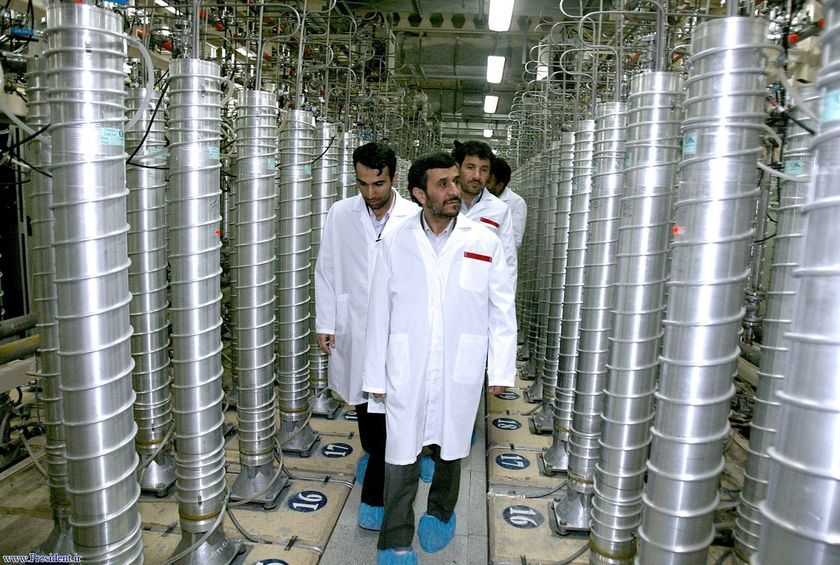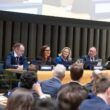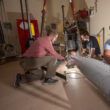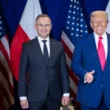Agreements should be kept
By Andreas Persbo |
Earlier this year, I published a 17-page paper on nuclear safeguards commissioned by theEU non-proliferation consortium; that paper only scratches the surface of how safeguards work. Attempting to summarize the legalities of this complex system on a specific country will not be easy. This Round One essay nevertheless attempts to encapsulate the law of safeguards as applied on Iran's nuclear fuel cycle. As the Roundtable format is brief, less than 900 words, it will involve a certain degree of cherry picking; however, I hope that the following debate will help bring out a fuller flavor of the regime and synopsize its contemporary problems.
It is best to start with the basics. Iran joined the 1968 Nuclear Non-Proliferation Treaty (NPT) on February 2, 1970. By ratifying the treaty, Iran undertook not to "manufacture or otherwise acquire nuclear weapons or explosive devices" (Article II). It also pledged to sign-up to safeguards "with a view to preventing diversion of nuclear energy from peaceful uses to nuclear weapons or other nuclear explosive devices" (Article III.1). The International Atomic Energy Agency (IAEA) is charged with the administration of safeguards under the treaty. A Safeguards Agreement is a separate, legally binding contract between the IAEA and the state. Hence, there are situations when a state can be in compliance with the UN treaty, but not with its Safeguards Agreement. In the past, Iran has not been compliant with its agreement (for instance, in June 2003 and September 2003), whereas its compliance with the NPT has not been established.
Though the process is outlined in the Safeguards Agreement, the easiest way to explain the safeguards system is to paraphrase Hans Blix. The IAEA is a bit like the taxman, investigating annual tax returns. The taxman checks that the income declaration is correct, but may, if the submitter is unlucky, also look into whether everything is complete. The IAEA, in a similar way, confirms that the material balances in the country are as declared, but it also makes an assessment on whether it seems complete.
Iran has a Comprehensive Safeguards Agreement (CSA) with the IAEA. The agreement is called "comprehensive" because it covers "all source or special fissionable material in all peaceful nuclear activities within [Iran's] territory, under its jurisdiction or carried out under its control anywhere" (Article 1). In terms of verification, the IAEA has the "right and the obligation to ensure that safeguards will be applied" on this material "for the exclusive purpose of verifying that such material is not diverted to nuclear weapons or other nuclear explosive devices" (Article 2). These two articles of law need to be fully digested and cannot be subject to a quick read.
Consider that the agreement applies to all source or special fissionable material, irrespective of where it is located, if it is declared or undeclared, or even placed in a nuclear explosive device. In practice, this means that the IAEA always needs to check that Iran's material declarations are correct as well as complete. If it did not, it would fail to abide by its own obligations under the agreement. It has long be recognized, however, that doing this completeness check is difficult without some strengthened authority.
Therefore the IAEA, in the early 1990s, embarked on a process to strengthen safeguards, whereby the Additional Protocol was developed. (Several articles on this are publicly available, but Suzanna Van Moyland's "The IAEA's Programme 93+2" is an excellent background read.) One of the drivers behind the drafting of the CSA's Additional Protocol was to make it easier for the agency to draw a conclusion that there is no undeclared nuclear material in a member state. However, it is important to underline — indeed highlight brightly — that the IAEA's obligation to draw conclusions on the absence of undeclared material is inherent in the CSA. This was not an innovation introduced by the Additional Protocol, as it is sometimes claimed.
So does Iran's Safeguards Agreement require the IAEA to verify that materials have been placed in nuclear explosive devices? No, not at all. The objective of safeguards procedures in Iran is the "timely detection of diversion of significant quantities of nuclear material from peaceful nuclear activities to the manufacture of nuclear weapons or of other nuclear explosive devices or for purposes unknown, and deterrence of such diversion by the risk of early detection" (CSA, Article 28). The reference to "purposes unknown" anticipates situations when a diversion of material to a weapon cannot be conclusively proven. It stands to reason that the IAEA should be able, and indeed is expected, to report to its members if enough material for a nuclear weapon cannot be accounted for.
The paragraphs above capture the essence of the IAEA's authority to conduct inspections in Iran, and the basis of its right, indeed obligation, to follow up on concerns on undeclared material. This includes possible military dimensions of Iran's nuclear program, as these activities by themselves are indicators of misuse of nuclear material.
Another way of putting it is to say that the IAEA simply employs standards agreed with Iran to investigate and assess the country's compliance with its Safeguards Agreement, and that the agreement should be kept. Those standards are legally correct and politically appropriate. In addition, Iran could take an essential step toward concluding that all material in Iran is in peaceful use by ratifying the Additional Protocol. The ratification would hence, ultimately, serve Iran's best interest.
















